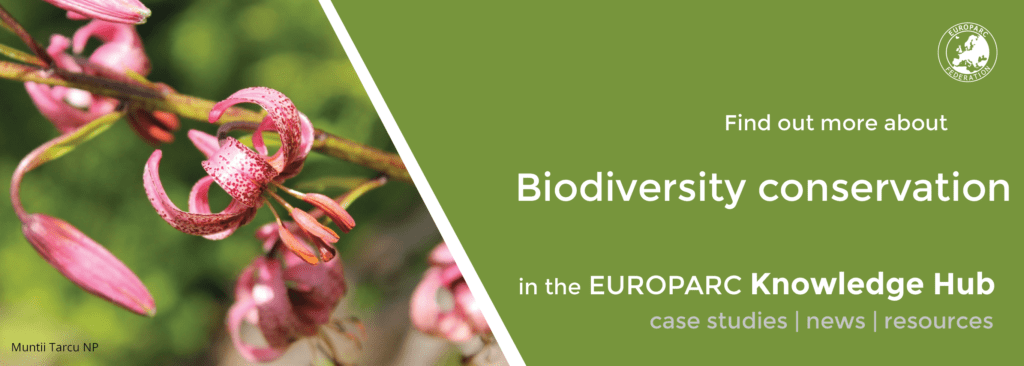Bats conservation & the management of Gypsum habitats: a case study from Italy
Myotis blithii - Photo: Francesco Grazioli
Bats conservation & the management of Gypsum habitats
Due to the influence of the Mediterranean climate and the Apennine forest, Protected Areas & Natura 2000 Sites in the Emilia-Romagna region, Italy, enclose great biodiversity. They hold numerous habitats were rare species find refuge. Bats, for instance, are one of the key species there, thanks to the peculiarity of this territory: the presence of caves, due to the karst soil. This is how the Emilia-Romagna region is working to protect these fragile habitats and the species that depend on them.
Chalky habitats, treasures from the Romagna
To protect these particular habitats and the biodiversity they hold, between 2010 and 2016 was launched the LIFE project: “GYPSUM: protection and management of the habitats linked to the chalky formations of the Emilia-Romagna region“. (LIFE+ 08 NAT/IT/000369). The project aims at preserving the environments connected to the presence of gypsum rock and, in particular, the rocky cliffs. It puts its focus on two important and endangered inhabitants:
- Their typical pioneer vegetation, such as rupicolous calcareous plants or basophilic grasslands (habitat 6110 * – Rupicolous calcareous or basophilic grasslands of the Alysso-Sedion albi of the 92/43/EEC directive)

(6110 )Report under the Article 17 of the Habitats Directive Period 2007-2012 – Photo: European Environment Agency
- The underground karst environments, populated mainly by bats (habitat 8310 Caves of the 92/43/EEC directive).
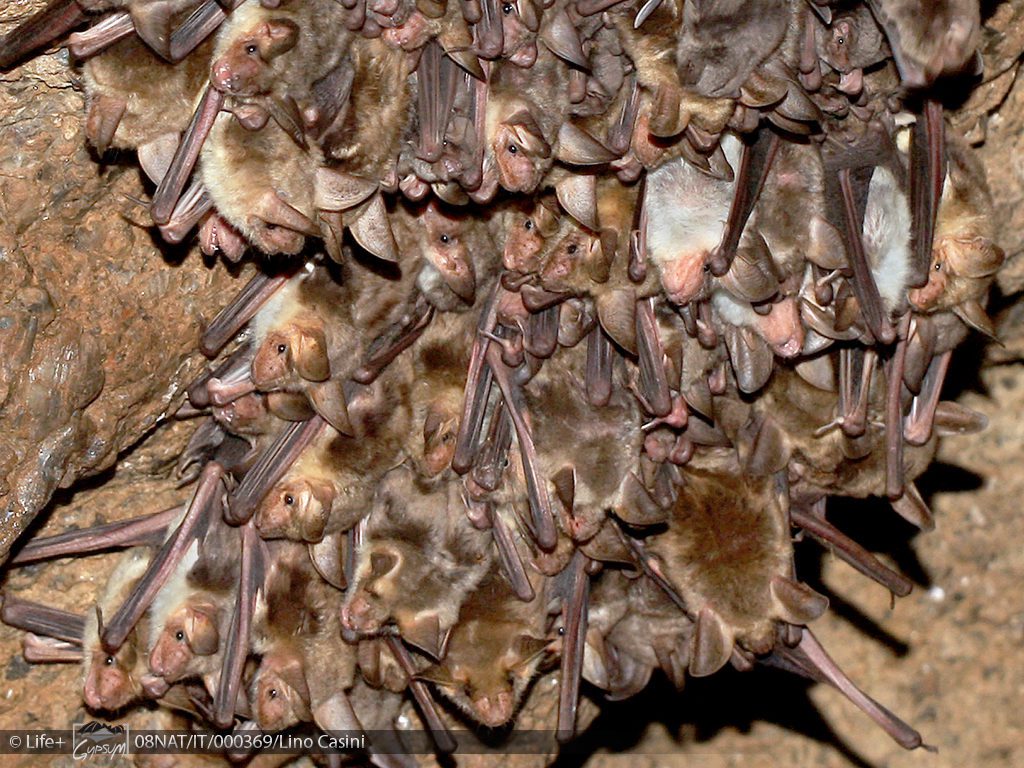
Riserva Naturale Onferno 2009 – Photo: Lino Casini
Previous situation: Problems
- The vegetation of rocks was damaged both by the shade caused by exotic conifers and by the passage of cars along a carriage crossing the mountain. It was necessary open space for sunlight on the steepest cliffs, especially those facing south.
- The bat population in caves was decreasing because of the disturbance caused by speleological activities and of the difficulty in accessing the cavities due to natural or human debris. The abandoned quarry tunnels, then, were little used by bats because of the unfavorable climate due to the wide entrances. It was necessary to stabilize the microclimate of the tunnels reducing the artificial entrances and expanding the natural sinkholes and to prevent further damages reducing the human presence in caves used by bats.
Actions
Bats conservation & the management of Gypsum habitats
1. Removal and cutting exotic conifers from the cliffs.
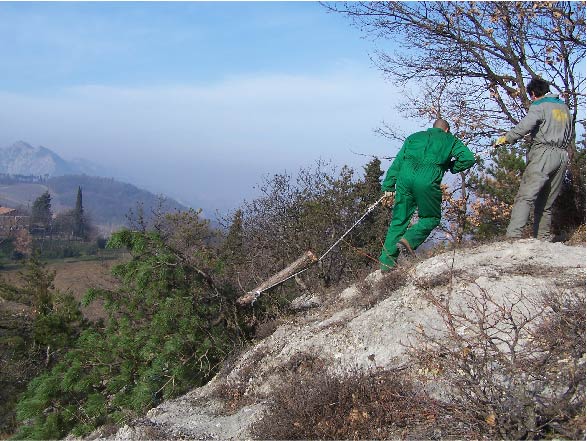
Photo: Andrea Noferini
2. Agreements with the Municipalities for the official closure of the road. Placement of gypsum boulders to prevent parking and creating two new parking lots.
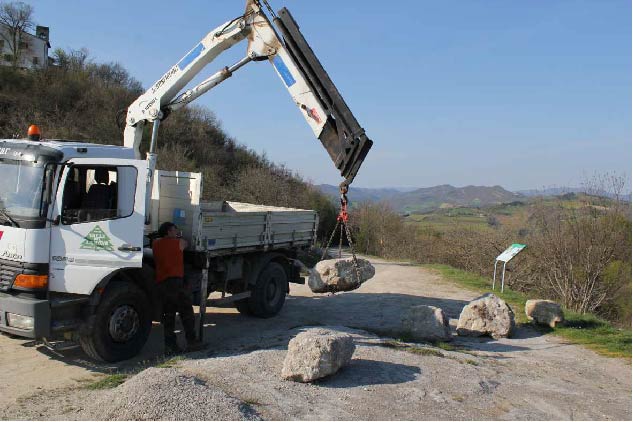
Photo: Andrea Noferini
3. Agreements with the speleological associations to concrete strict regulation of accesses to the caves and set gates at some entrances.
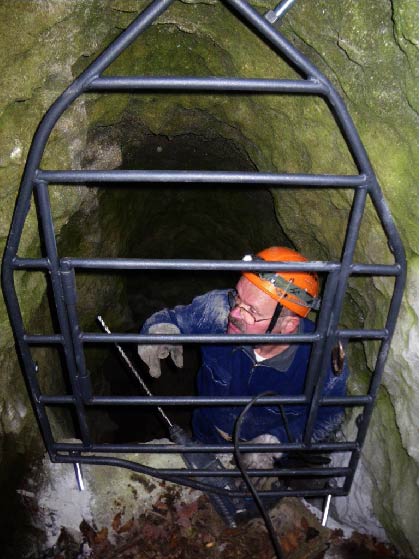
Photo: Andrea Noferini
4. Removal of tons of old human debris and waste in sinkhole entrances
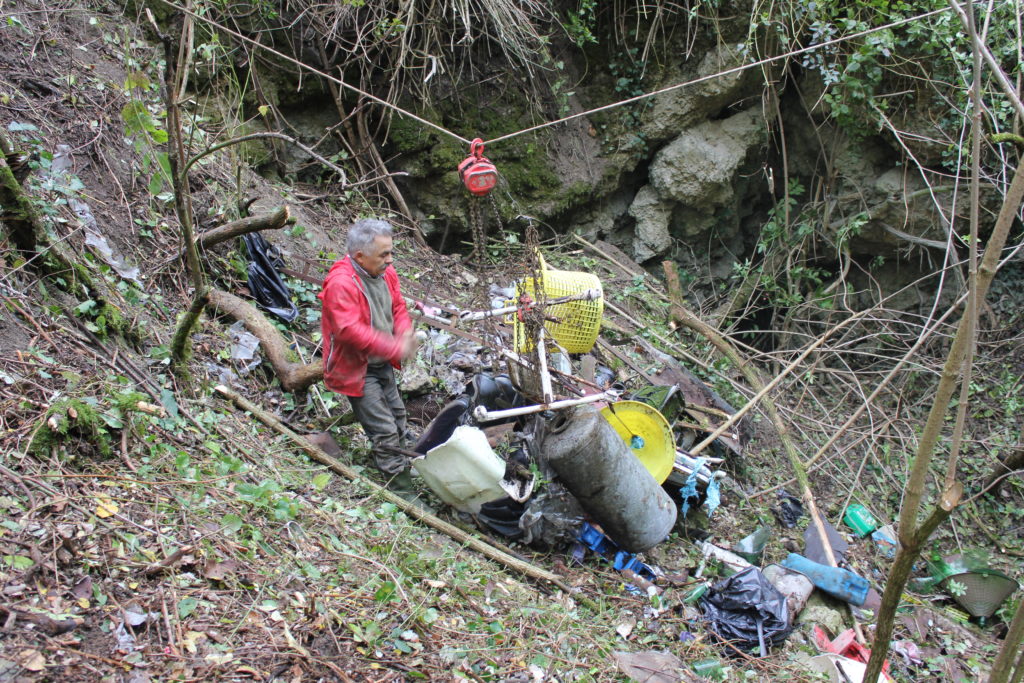
Photo: Piero Lucci
- Placement of excavation debris of a quarry by the tunnel entrances of former quarries reducing the tunnels entrances.
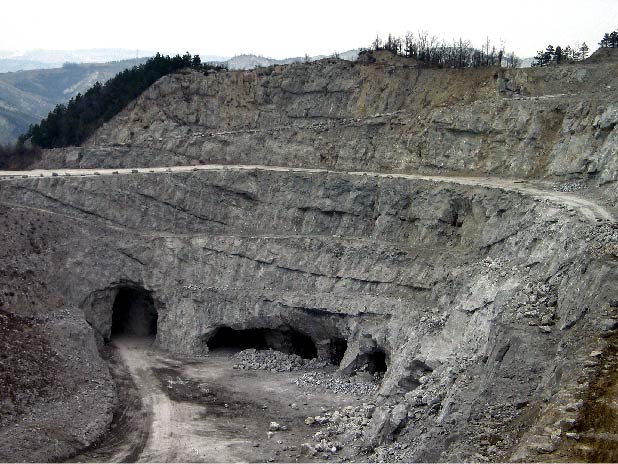
Photo: Piero Lucci
Challenges
Protected Areas are frequently spaces where different types of users develop their own activities or even live in. Therefore, involving the community and local stakeholders is normally one of the main challenges of any conservation project – but a key action to ensure its success.
Some of the biggest challenges during the project was precisely raising awareness on the many action. Cutting trees, for instance, is always a difficult measure to be accepted in a protected area. Besides, the project managers had to convince local residents about the road closure, start a collaboration project with speleologists, involving them directly in the project, in the cleansing of sinkholes and for the positioning of the gates.
Diverse stakeholders require different approaches, but as Massimiliano Costa from the Agency of Parks and Biodiversity of Emilia-Romagna says:
It is important to use creativity to solve problems…
Recommendations
This implementation of the project and the improvement in the habitats wouldn’t be possible without the involvement of the community, raising awareness about the problems that the territory is facing is fundamental to find a common objective, reconnect them with nature and minimize possible conflicts. Furthermore, great knowledge of the area and the environment are key to undertake good and effective actions.
Imagination and having an open mind is a great help: in the past, the miners did not know where to put the excavation debris and had never thought of using them to reduce the section of the old tunnels.
